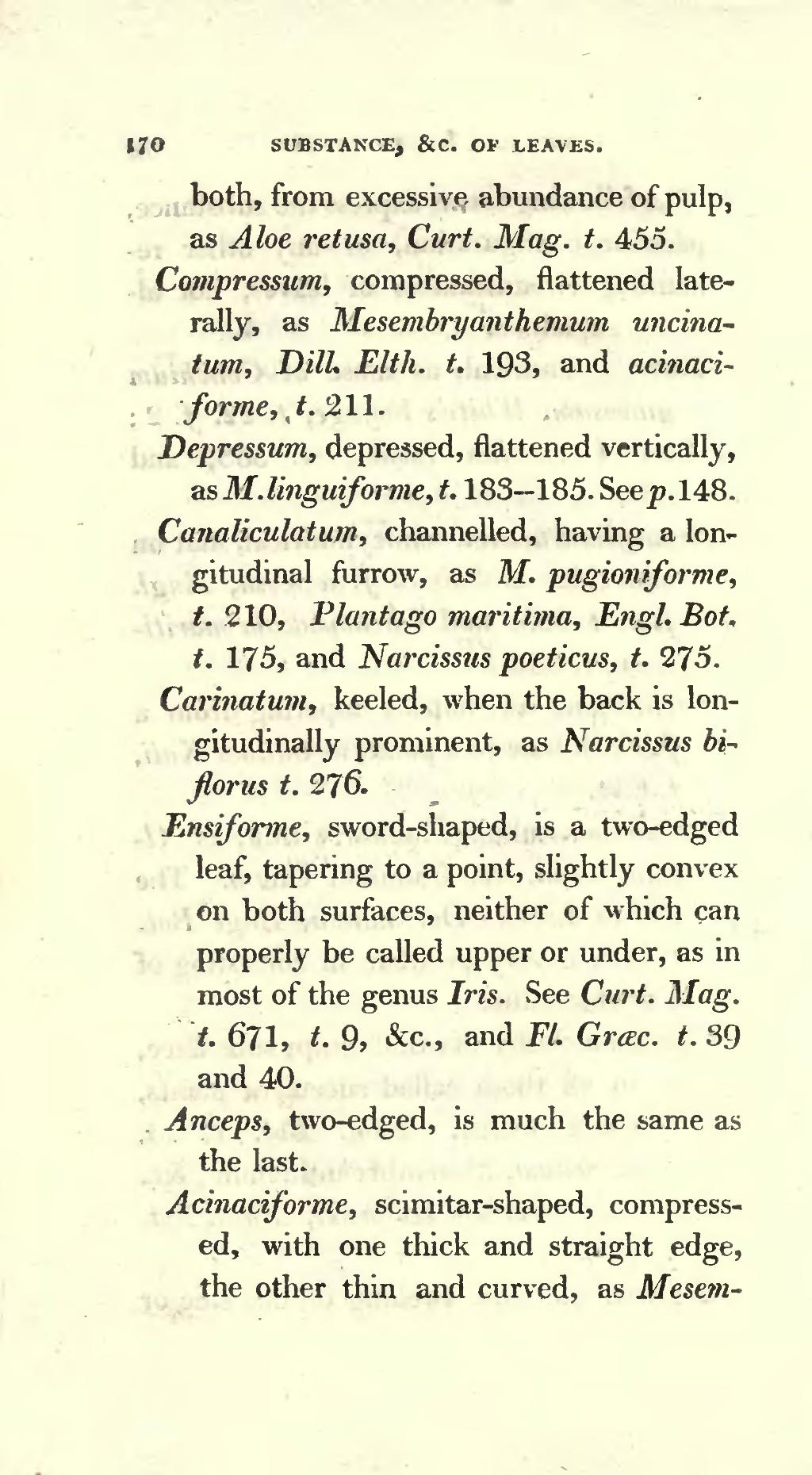both, from excessive abundance of pulp, as Aloe retusa, Curt. Mag. t. 455.
Compressum, compressed, flattened laterally, as Mesembryanthemum uncinatum, Dill. Elth. t. 193, and acinaciforme, t. 211.
Depressum, depressed, flattened vertically, as M. linguiforme, t. 183—185. See p. 148.
Canaliculatum, channelled, having a longitudinal furrow, as M. pugioniforme, t. 210, Plantago maritima, Engl. Bot. t. 175, and Narcissus poeticus, t. 275.
Carinatum, keeled, when the back is longitudinally prominent, as Narcissus biflorus t. 276.
Ensiforme, sword-shaped, is a two-edged leaf, tapering to a point, slightly convex on both surfaces, neither of which can properly be called upper or under, as in most of the genus Iris. See Curt. Mag. t. 671, t. 9, &c., and Fl. Græc. t. 39 and 40.
Anceps, two-edged, is much the same as the last.
Acinaciforme, scimitar-shaped, compressed, with one thick and straight edge, the other thin and curved, as Mesem-
